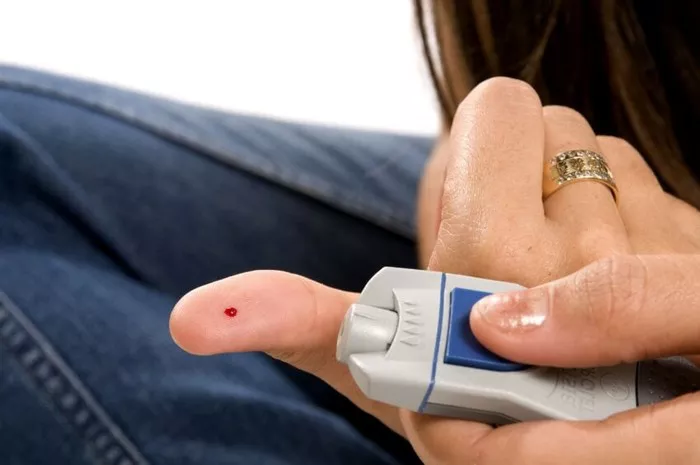Type 1 diabetes (T1D) is a chronic autoimmune disorder characterized by the destruction of insulin-producing beta cells in the pancreas, leading to an absolute deficiency of insulin production. This condition manifests through a variety of symptoms, some of which can be subtle and easily overlooked. Early recognition of these symptoms is crucial for timely diagnosis and initiation of appropriate management strategies. In this comprehensive article, we will explore the diverse spectrum of symptoms associated with type 1 diabetes, ranging from classic signs of hyperglycemia to less common manifestations, along with their implications for diagnosis, treatment, and overall health.
Classic Symptoms of Type 1 Diabetes
1. Polyuria (Frequent Urination): Excessive urination is one of the hallmark symptoms of type 1 diabetes. As blood sugar levels rise due to insulin deficiency, the kidneys attempt to remove the excess glucose from the bloodstream by excreting it in the urine. This leads to increased urine production, resulting in frequent urination, particularly during the day and night.
2. Polydipsia (Excessive Thirst): Excessive thirst, or polydipsia, is closely related to polyuria in individuals with type 1 diabetes. The loss of fluid through frequent urination triggers thirst mechanisms, causing affected individuals to drink large volumes of fluids in an attempt to stay hydrated.
3. Polyphagia (Increased Hunger): Despite consuming adequate calories, individuals with type 1 diabetes may experience persistent hunger, known as polyphagia. This is thought to occur due to the body’s inability to properly utilize glucose for energy, leading to cellular starvation and increased appetite.
4. Weight Loss: Unintentional weight loss is a common symptom of untreated type 1 diabetes. In the absence of sufficient insulin action, the body is unable to properly metabolize glucose and convert it into energy. As a result, the body begins to break down stored fat and muscle tissue for energy, leading to weight loss despite increased hunger and food intake.
5. Fatigue and Weakness: Persistent fatigue and weakness are common symptoms of type 1 diabetes, often attributed to the body’s inability to utilize glucose effectively for energy production. Individuals with untreated type 1 diabetes may experience feelings of tiredness, lethargy, and reduced stamina, impacting their daily activities and quality of life.
6. Blurred Vision: Fluctuations in blood sugar levels can affect the shape and flexibility of the eye’s lens, leading to changes in vision. Blurred vision is a common symptom of uncontrolled hyperglycemia in individuals with type 1 diabetes and may improve with normalization of blood sugar levels.
Less Common Symptoms of Type 1 Diabetes
1. Nausea and Vomiting: Persistent nausea and vomiting may occur in individuals with type 1 diabetes, particularly in cases of diabetic ketoacidosis (DKA), a life-threatening complication characterized by severe hyperglycemia, ketosis, metabolic acidosis, and dehydration.
2. Abdominal Pain: Some individuals with type 1 diabetes may experience abdominal pain, often described as cramping or discomfort in the upper abdomen. Abdominal pain may be a sign of gastrointestinal disturbances associated with hyperglycemia or DKA.
3. Fruity Breath Odor: In cases of severe hyperglycemia and ketoacidosis, individuals with type 1 diabetes may develop a distinctive fruity breath odor, often described as sweet or acetone-like. This odor is caused by the presence of ketone bodies in the breath and is a sign of metabolic acidosis.
4. Changes in Mental Status: Severe hyperglycemia and DKA can affect mental status, leading to confusion, disorientation, and altered consciousness. These changes may result from metabolic disturbances, electrolyte imbalances, and dehydration associated with uncontrolled diabetes.
Implications for Diagnosis and Treatment
Early recognition of the symptoms of type 1 diabetes is crucial for timely diagnosis and initiation of appropriate treatment. If left untreated, type 1 diabetes can lead to life-threatening complications such as DKA, which requires prompt medical intervention. Healthcare providers use a combination of clinical symptoms, laboratory tests, and diagnostic criteria to diagnose type 1 diabetes, including fasting plasma glucose levels, oral glucose tolerance tests, and glycated hemoglobin (HbA1c) levels. Once diagnosed, treatment for type 1 diabetes typically involves insulin therapy, blood sugar monitoring, nutrition therapy, physical activity, and education and support to help individuals manage their condition effectively and prevent complications.
Conclusion
Type 1 diabetes is a complex and chronic condition characterized by the destruction of insulin-producing beta cells in the pancreas. The symptoms of type 1 diabetes can vary widely in presentation and severity, ranging from classic signs of hyperglycemia such as polyuria, polydipsia, and polyphagia to less common manifestations such as weight loss, fatigue, and blurred vision. Early recognition of these symptoms is crucial for timely diagnosis and initiation of appropriate treatment to prevent complications and improve overall health and well-being. Through a collaborative and multidisciplinary approach to care, healthcare providers can empower individuals with type 1 diabetes to effectively manage their condition and lead fulfilling lives despite the challenges posed by this chronic disease.
























